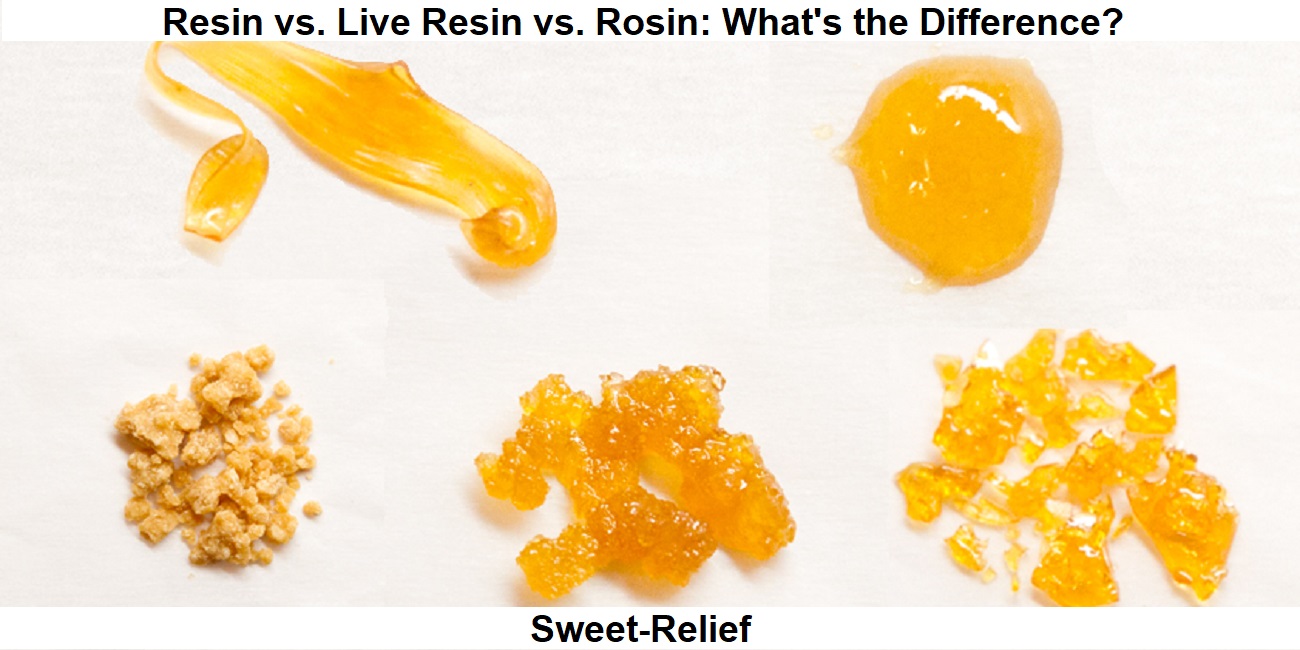In the past few years, the consumption of cannabis has extended far beyond old school joints and bowls full of ground flowers. Today, consumers can enjoy pot in a variety of innovative forms that would blow the kneecaps off past generations of smokers — people more familiar with homegrown shake filled with seeds and stems than butane hash oil and “fast-acting” edibles.
There’s plenty of buzz in the cannabis community regarding the three Rs: Resin, live resin, and rosin — all highly potent forms of cannabis. There’s also a great deal of confusion regarding these avenues of cannabis consumption and the relative pros and cons offered by each. With legalization spreading across the United States and the pool of marijuana consumers growing daily, those in both legitimate and black markets need to understand their options in terms of how they can consume the kind herb.
Live Rosin vs Live Resin
Both live rosin and live resin are similar in their output — a potent extract that utilizes the natural resin found in the cannabis plant to create a connoisseur level concentrate experience.
Live Resin
Characteristics
Live resin, after it is extracted, is soft and pliable. It has a lovely amber color and a sugary texture, as seen below. It is incredibly potent, and it is often seen as a high-end product.
Extraction Method for Live Resin
The extraction process for live resin is complicated and requires a unique skill set. The whole plant is cryogenically frozen immediately after harvest. Later, the live resin is extracted using a light hydrocarbon solvent, like butane and/or propane, which is then removed from the finished product prior to consumption.
This process is more complex than other extractions, as it requires special cryogenic equipment as well as light hydrocarbon solvents which are highly flammable and requires special storage. We have explained the process of material preparation and how to make live resin in more detail in another article.
Taste
Live resin is beloved by cannabis and hemp experts because of its exquisite taste and color. Because of the cryogenic freezing process, the end product retains the plant’s natural terpenes and cannabinoids, which impart a strong flavor and color to the final product. It’s generally regarded as a superior product due to this flavor profile.
Cost
Live resin is the lower cost product to the end consumer. This is mainly due to the scale at which quality live resin outputs can be produced. Long lasting demand has created large scalable processes for mass producing this particular product.
Live Rosin
Characteristics
When live rosin is skillfully crafted from proper material it creates an output product that rivals even the best solvent based cannabis extracts. The final consistency will be determined by how the rosin is finished. There are several variables that can be manipulated after the rosin is pressed to create the ideal consistency of your choice. Most producers will opt for the common “cold cure” finish that creates a “badder” style consistency, seen below.
Extraction Method for Live Rosin

Rosin is made by applying high heat and pressure to fresh buds, hash, or keif to release the resin from the plant. This resin contains high amounts of THC and CBD, making it a potent product.
Unlike live resin, there are no chemicals (butane) used in this process, and can be favored as a more all-natural alternative.
Taste
The taste of a live rosin product is directly related to the quality of the input material. If high quality hash is pressed utilizing the proper parameters, the output will mimic the exact aroma and flavor of the live plant in its final moments before harvest. If lower quality hash or flowers are utilized, a lower quality output product will result, ultimately diminishing the ability of the process to create a top tier level product.
What is live resin?
It is a cannabis concentrate that gets its name from the freshness of the cannabis plant from which it’s made. Unlike the majority of cannabis products, live resin is made from plant material that hasn’t been dried or cured. The starting plant material used for live resin includes fresh flower buds and sugar leaves; the large fan leaves and stems are excluded. The flash-freezing process helps preserve the most desirable compounds and retain the full flavor of the cannabis plant. Concentrate enthusiasts tend to gravitate toward it thanks to its more flavorful and aromatic dabbing experience.
Capturing the full essence and aroma of living cannabis is the primary goal. The live resin production process — flash-freezing the plant material, then extracting compounds from it — is associated with high-quality and flavorful concentrates. Bypassing the typical drying and curing stage allows for a greater proportion of essential oils. These essential oils, technically called terpenes, are the compounds responsible for the distinctive flavors and aromas in weed, and in the final extraction product.
What does live resin look and feel like?

It comes in a variety of colors and forms. The type of cultivar, or strain, used for the concentrate affects a lot of the chemical and physical characteristics of the extract. Live resin is chock full of terpenes in greater proportions than other concentrates. With the additional essential oils, the consistency is typically looser than other concentrates. The more terpenes, the runnier and more malleable the concentrate. The most common consistencies of live resin are sap, sugar, badder/budder, and sauce.
What’s the difference between live resin and sauce?
The starting plant material determines if it’s sauce. Live resin always starts with fresh weed plants that are processed by flash-freezing. Sauce, in contrast, may start with fresh plant matter or cured bud. The cured plant material is going to lack the high levels of terpenes found in live resin. Be sure to examine the packaging and labels of the sauce for whether it’s cured nug sauce or live resin sauce.
